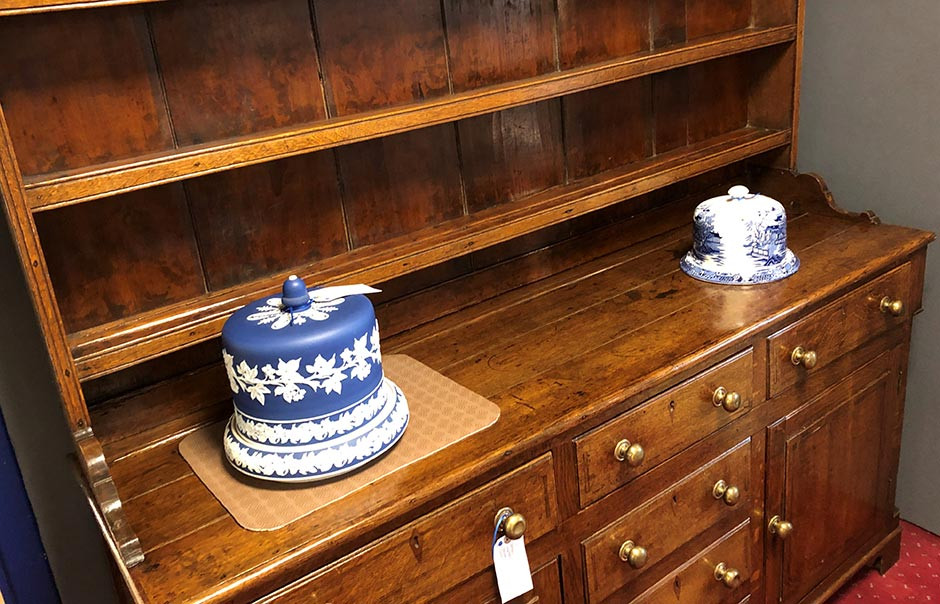
Shelves and racks used for anything other than storing books were a rarity before the 16th century. Fast-forward to the 19th century and all kinds of storage solutions and displays had popped up. But what are these antique whatnots? Etageres, canterburies, perches? Antique shelves and racks come in many unusual names. We’re here to help you make sense of them.
Antique shelves
Once the sign of a wealthy homeowner, early antique shelves (usually in the form of open glass perches) were primarily used to show-off fancy wares or store fragile drinking vessels. When you think about our shelves at home today, often filled with ornaments or wine glasses, not much has changed since the 16th century.
Most large houses had shelving in the 18th-century. It’s rare you’ll find any of these items for sale, since they were fitted to interior walls and cannot be removed from listed buildings. More common on the market today are hanging antique shelves, elegantly decorated with chinoiserie or Gothic motifs. A quality example can sell for between £8,000 to £12,000 today. Other valuable antique shelves for sale are those from the late Georgian and Regency periods. If they’re also based on designs by Thomas Sheraton or George Hepplewhite, they can reach up to £6,000 at auction.
Basic, late-Victorian shelves were usually set up at home: you can often nab one today with a 20-pound note. However, be cautious that some ‘Victorian’ pine shelves can actually be made up by dealers from old wooden boards. Buy from a reputable dealer, such as those within Hemswell Antiques Centres, to ensure you’re investing in quality, genuine antique shelves.
Antique plate racks
By the 17th century, glass perches evolved into ‘delft’ plate racks. Heavier ceramic wares could now be slotted into these simple structures. Delft racks from the 17th and 18th centuries are the most common antique plate racks for sale today, often repaired or altered in size. They’re usually elaborately carved and made of oak. You can find quality Victorian antique plate racks today for around £30-£50, though some pine delft racks from the late 18th century sell for up to £900.
Canterbury antiques
Appearing in the late 18th century, canterbury antiques were originally used to store sheet music. Today, you’ll probably see magazines neatly slotted in their dividers. Early canterbury antiques are often basic but elegant, with around four vertical compartments sitting on a fitted drawer with little legs. Later designs might have X-framed dividers and even a table top. Pretty much every antique canterbury for sale will be made from mahogany, though you might find the odd piece in satinwood. Victorian examples (which tend to be heavily carved) can sell at auction for between £500 and £1,500, while Georgian canterbury antiques can go for up to £5,000.
Antique whatnots
Perhaps one of the most strangely named storage solutions, whatnots are also known as antique etageres (just to make it even more confusing). They first appeared in the late 18th century and can be identified by triple-tiered shelves on corner supports. Sometimes there are castors, sometimes there are more shelves. The majority of antique whatnots for sale are mahogany, although you might find them in rosewood or bird’s-eye maple. As always, prices depend on quality, materials and beauty. While fine Regency whatnots antiques can sell for up to £3,500, their mahogany-veneered counterparts from the same date could sell for less than half of that.
Where to buy antique shelves for sale
Now you know the whos, whys and whatnots, it’s time to ask - where? Hemswell Antique Centres are the largest in Europe, with a stunning collection of antique shelves for sale. Uncover beautiful bargains on our site or visit us in Lincoln to see even more quality treasures from the past (and grab a cake and a cuppa while you’re at it).